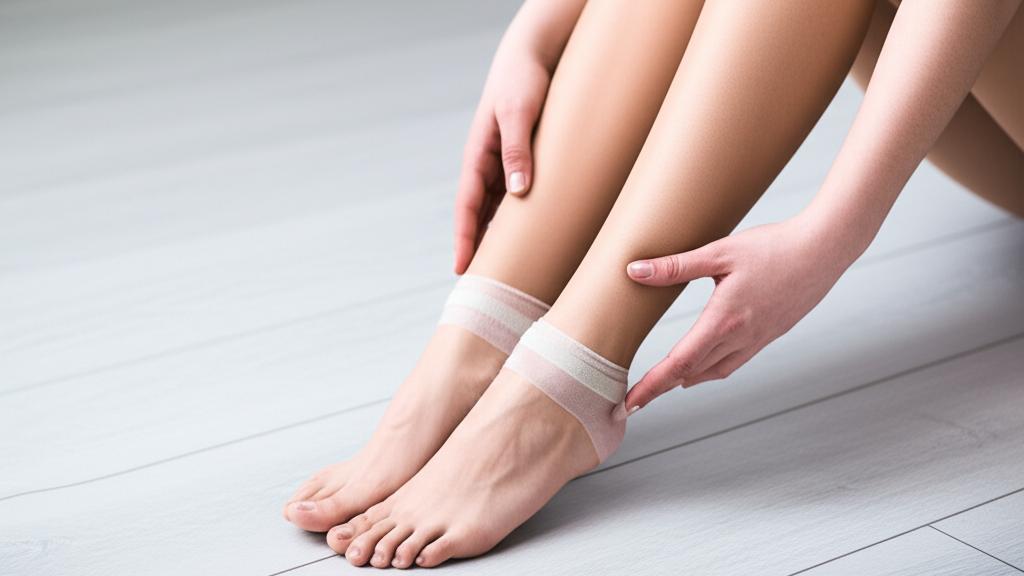Ouch! That first step out of bed… it can feel like you’re stepping on a sharp stone, can’t it? That sharp, stabbing pain in your heel is something I hear about quite often in my clinic. Sometimes, when we dig a little deeper, we find a little bony surprise called a heel spur. It’s a common reason people come to see me, worried about what’s causing such discomfort.
So, what exactly is a heel spur? Well, imagine a tiny, bony protrusion, like a little spike, growing out from the bottom of your heel bone. It points forward, right where your heel bone connects to that tough band of tissue running along the sole of your foot – we call that the plantar fascia. It’s a ligament that acts like a shock absorber. About 15% of folks have these heel spurs, and often, they don’t even know it! They tend to develop over time.
Heel Spurs vs. Plantar Fasciitis: What’s the Link?
Now, people often ask me, “Doc, is this the same as plantar fasciitis?” That’s a great question. They’re related, like cousins, but not identical twins.
- Plantar fasciitis happens when that plantar fascia ligament gets overstretched or torn, often from overuse. This leads to inflammation and that classic stabbing heel pain, especially bad with the first few steps in the morning or after sitting for a while. The pain might ease up as you walk, but then… bam, it can come right back after you rest and stand up again.
- Heel spurs can actually form because of the stress and inflammation from plantar fasciitis. Think of it as your body’s reaction. Over time, it might lay down extra bone tissue in response to that ongoing strain, and that becomes a heel spur.
The tricky thing is, the heel spur itself usually isn’t the culprit causing the pain. Weird, right? Most of the time, that sharp pain you feel is actually from the plantar fasciitis. If the spur does contribute to discomfort, the pain feels very much like plantar fasciitis pain.
What Causes Heel Spurs?
So, why do these little bony bits form?
Heel spurs are essentially your body’s way of reacting to stress and strain on the ligaments and tendons in your foot.
- As I mentioned, ongoing plantar fasciitis is a big one.
- Repeatedly tearing the membrane that covers your heel bone can also trigger it.
- Sometimes, issues with how you walk – what we call a gait disorder – can put unusual stress on the heel, leading to a spur. This can happen if an illness or condition affects your balance and coordination.
Finding Out: How We Diagnose Heel Spurs
When you come in with heel pain, the first thing I’ll do is have a good chat with you. I’ll ask about your daily activities, what makes the pain worse, what makes it better. I’ll also gently examine your foot, feeling for tenderness.
But to really see if there’s a heel spur lurking, an X-ray is usually our best bet. It gives us a clear picture of the bones in your foot and will show any bony growths. It’s a pretty straightforward test.
Easing the Ache: Treatment for Heel Spur-Related Pain
If we find a heel spur, the good news is we usually focus on treating what’s actually causing the pain – which, as we’ve discussed, is often that pesky plantar fasciitis. The spur itself rarely needs direct treatment because, in many cases, it’s not the direct source of pain.
Here’s what we typically recommend to help you feel better:
- Rest your heel: If you’re a runner or jogger, taking a break from high-impact activities can make a big difference.
- Ice it: Applying a cold pack or rolling your foot over a frozen water bottle for 15-20 minutes can help reduce inflammation and pain.
- Anti-inflammatory medications: Over-the-counter options like ibuprofen can help manage pain and swelling. We can discuss if these are right for you.
- Supportive footwear: Wearing shoes with good arch support and cushioning is key. Sometimes, custom or over-the-counter orthotic inserts can provide extra support and cushion your plantar fascia.
Will I Need Surgery?
I get asked this a lot: “Do I need surgery for my heel spur?”
It’s very rare for us to recommend surgery just to remove a heel spur. If you’re having surgery for severe plantar fasciitis that hasn’t improved with other treatments, sometimes a surgeon might remove the spur at the same time if it’s thought to be contributing. But the spur itself? Not usually the main target. We always try less invasive treatments first.
And here’s something important to know: once a heel spur forms, it’s there to stay unless it’s surgically removed. But remember, since the spur itself often isn’t the painful part, our goal is to manage the symptoms of the condition that led to it, like plantar fasciitis. Treating that usually brings relief.
What to Expect and How to Prevent Heel Spurs
If you have heel spurs, the main thing is managing any associated pain, usually from plantar fasciitis. Surgery to remove a spur is an option we can discuss, but it’s not often the first step.
Can I Prevent Heel Spurs?
You might be wondering, “How can I avoid these?” or “Am I more likely to get them?” Good questions! Several things can increase your risk. Some you can change, some you can’t.
Changes you can make right now:
- If you run or jog, try softer surfaces like grass or a track instead of hard pavement.
- Make sure your shoes fit well and provide good arch support.
- Walking barefoot on hard floors? Maybe try slippers or supportive shoes indoors.
- Think about how you walk – sometimes small adjustments can reduce heel pressure.
Changes you can make over time:
- If you’re carrying extra weight, losing some can reduce pressure on your feet.
- If your job or daily routine keeps you on your feet constantly, look for ways to incorporate more sitting breaks.
Things you can’t change (unfortunately!):
- As we get older, the plantar fascia can become less flexible and more prone to damage.
- The natural fatty pad on the bottom of our feet thins with age.
- Having very flat feet or very high arches can also be a factor.
Living With Heel Spurs: Day-to-Day Care
Living with a heel spur mostly means managing the symptoms of whatever condition is causing you discomfort. Since the spur itself is often just an innocent bystander, focusing on foot health is key.
- Cut back on activities that really flare up your heel pain.
- Always opt for those well-fitting, supportive shoes. Your feet will thank you!
If you’ve been trying things at home and that heel pain just isn’t letting up, please come and see me or your healthcare provider. Persistent pain is always a sign to get things checked out. It might mean we need to try a different approach or look for other issues.
When you see your doctor, you might want to ask:
- What do you think is causing my heel spur?
- What are my treatment options for the pain?
- Will my heel spur ever go away on its own?
- If it’s not the spur causing pain, what is?
- What can we do about the underlying problem?
Take-Home Message for Heel Spurs
Here’s a quick rundown of what to remember about heel spurs:
- A heel spur is a bony growth on your heel bone, often linked to plantar fasciitis.
- Most heel spurs don’t actually cause pain themselves; the pain usually comes from inflammation of the plantar fascia.
- Diagnosis often involves an X-ray to see the spur.
- Treatment focuses on relieving the pain of the associated condition (like plantar fasciitis) through rest, ice, supportive shoes, and sometimes medication.
- Surgery specifically for a heel spur is uncommon.
- Preventive measures include wearing good shoes, maintaining a healthy weight, and choosing softer surfaces for exercise.
You’re not alone in dealing with heel pain. We have many ways to help you get back on your feet comfortably. We’ll figure out the best plan for you.


